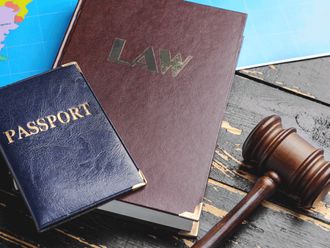Dubai: The massive fire which broke out in Al Tayer Tower early in the morning on Saturday — the third major high-rise fire in Sharjah in the last six months — has raised key safety questions in how these high-rise buildings were built and the materials used in the process.
In January this year, around 125 families were left homeless after a massive fire gutted the 25-storey Al Baker Tower 4 in Sharjah's Al Taawun area. Two months before that, a fire broke out at the 33-storey Al Aneeqa Tower in Al Nahda area in Sharjah, and six people were injured.
While authorities are still probing the cause of the fire that gutted the 40-storey Al Tayer Tower on Saturday, Brigadier Abdullah Mubarak Al Dukhan, Deputy Chief of Sharjah Police, was quoted as saying that the construction materials used for the building's facade were made of flammable materials that caused the fire to spread.
Gulf News spoke to fire safety experts to shed light on how fire can spread in a high-rise building and how this can be avoided.
"These types of fires usually break out in high-rise buildings because of the nature of fire, of hot air itself," Napoleon Soldevilla, a Senior Fire Protection Engineer at international design firm Burthill, told Gulf News.
"Hot air is light. Heat's direction is always upward. So, if the fire is coming from the bottom of the building, it has no other way, but up and it will burn everything in its way," Soldevilla said.
The use of fire protection systems can prevent or contain fire in one area. Currently, there are two kinds of fire protection — active and passive. Anything that is activated mechanically or electronically, such as sprinklers and fire hoses are active fire protection systems. Fire-retardant materials or fire-resistant walls, doors, or floors fall under passive fire protection.
Chimney effect
But using fire retardant materials can only contain fire in an area when there are no openings in between. In the floor slabs for example, all gaps should be covered with fire-resistant sealants.
"[The holes will create] a chimney effect because it will be very hot and it will rise through the opening. If a flame is present, what you will find is, it will light anything flammable, anything plastic and turn it into a gaseous fuel," Dubai-based Fire Protection and Life Safety Engineer Ben O'Regan said.
The same principle applies to the walls of a building. "If you are putting a cladding panel onto a wall, it should have something to latch on to. Between the wall and the cladding, there is a gap that has to be filled with an intumescent material or something that can withstand fire. It should not be filled with just any filler," Soldevilla said.










